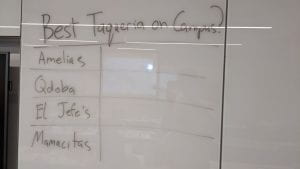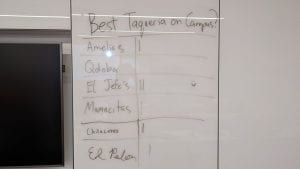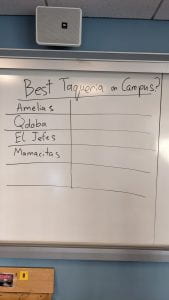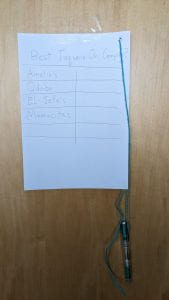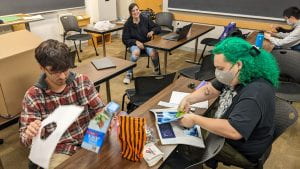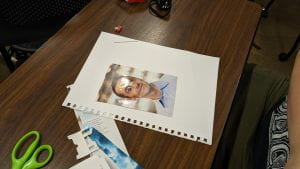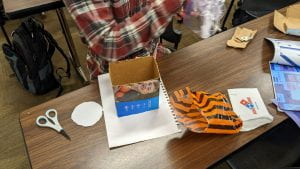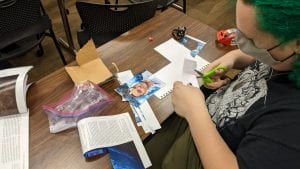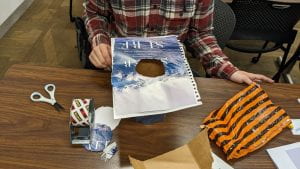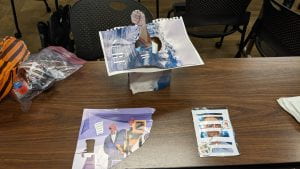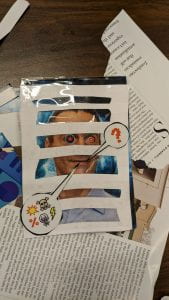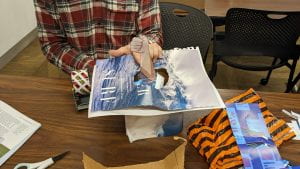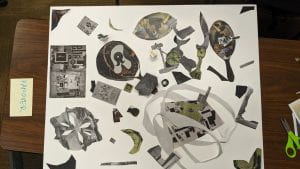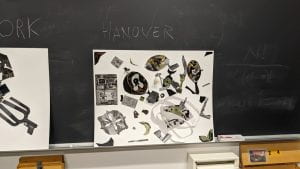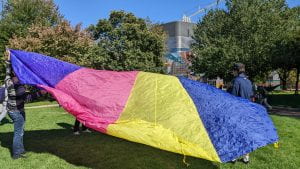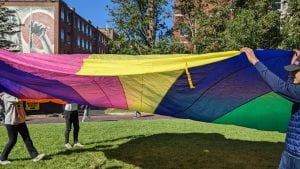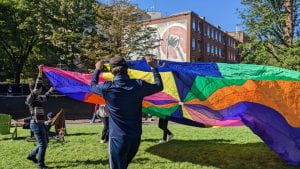Artist’s Statement
For this artwork, I wanted to explore and experience and feelings surrounding trust. I play a variety of mainstream class-based team shooters and although I need to trust in my teammates, I feel this genre often conflates trust in one’s teammates with expectations on their performance and then surprise or disappointment, often resulting in a toxic play space. I wanted to design a game where both players are truly at the mercy of each other and (due to a limited amount of information provided to each) must work together to move forward.
As such I designed Halves of a Brain, an in-person party game with 2 players and a moderator / quiz grader. An audience is also encouraged! There is a Describer (left-brain) and a Drawer (right-brain), each with one half of a pop-quiz, each sitting in a chair back-to-back. The Describer has the quiz questions and the Drawer has the quiz answers (but no idea what the question is). The brain analogy refers to how I like to imagine my brain cells communicate, turning memories lost deep in my mind into concepts and then into concrete answers. Similarly, the Describer must look at the answers and try to conceptualize this into an image that they will then describe how to draw to the Drawer. They must only describe how to draw lines and shapes and can’t use the word they are trying to describe or its synonyms. The Drawer must draw out this image and interpret it into an answer for the question. There are 5 questions and 15 minutes. Winning means getting a passing grade. The moderator/instructor can grade as they like with partial credit if they choose.
I was inspired by Yoko Ono’s cut piece, a performance which required the canvas (Yoko Ono) to trust others to participate safely and move the piece in a new direction. Both parties needed each other and there was an tension in the room as strangers needed to be trusted to participate without harming Yoko Ono. I was also inspired by the split information system used in Keep Talking and Nobody Explodes.
The Describer must trust that the Drawer is interpreting their instructions correctly and guessing correctly and the Drawer must trust that the Designer is providing an accurate description and not leading them astray. The Drawer can’t move forward without the Describer and the Describer has no power to complete the quiz. This creates an interlocked relationship of trust and need that I wanted to explore.
Playtests
Quiz:
- Trivia Question: Which instrument is associated with Earl ‘Bud’ Powell?
- Answer: Piano
- Trivia Question: In which branch of the arts is Katherine Dunham famous?
- Answer: Ballet
- Trivia Question: Who had an interest in psychic phenomena and held séances in the White House?
- Answer: Abraham Lincoln
- Trivia Question: In Swedish, a skvader is a rabbit with what unusual feature?
- Answer: Wings
- Trivia Question: What color does gold leaf appear if you hold it up to the light?
- Answer: Green
Caleb (Describer) and Thomas (Drawer)

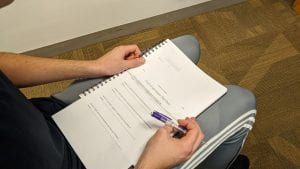
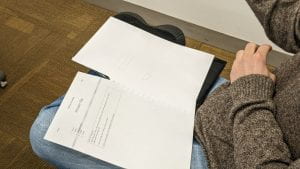


Jarrett (Describer) and Jennifer (Drawer)
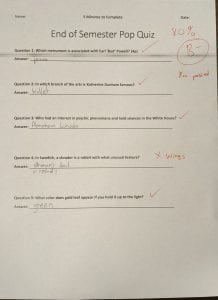
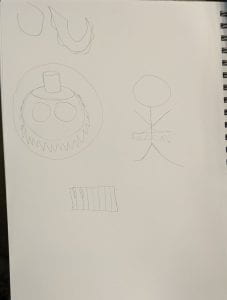
Notes
It took the groups around 2 minutes to complete each drawing with harder ones taking around 5 minutes. I originally has a 5 minute timer but extended it to 15 because 5 was way too short. It was interesting to notice that in the second playtest group, Jarrett opted not to draw what he was describing on his own end, but wrote what he was thinking before opting to just say it instead. The playtesters were laughing a lot and it was fun to see how they reacted to the answers at the end. The game is also very interesting to watch, seeing how in-sync the players are and watching them interpret what’s going on in their mind in real time. It’s definitely a game where users can swap roles and get a different experience.

